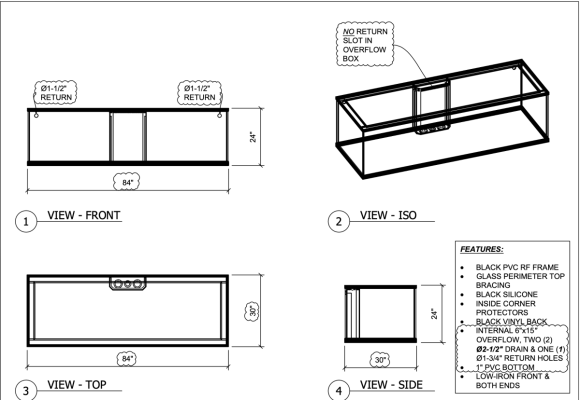My last tank was a waterbox, and came with the appropriate baseline piping for the overflow + return lines.
My next tank is a used tank minus the plumbing in these areas (specs are attached). Given I lack any experience in building my own overflow + returns, would anyone here be able to help guide me along the process with resources, kits or recommendations.
The tank is a Planet Aquarium tank, and I didn't quite see any overflow out of the box kits provided by them. Especially not in the size this tank requires.

My next tank is a used tank minus the plumbing in these areas (specs are attached). Given I lack any experience in building my own overflow + returns, would anyone here be able to help guide me along the process with resources, kits or recommendations.
The tank is a Planet Aquarium tank, and I didn't quite see any overflow out of the box kits provided by them. Especially not in the size this tank requires.





















